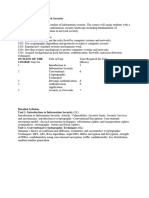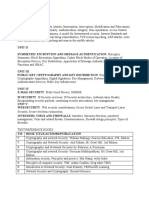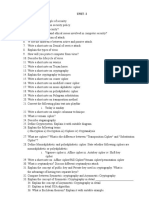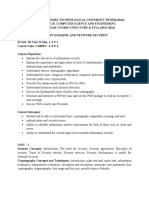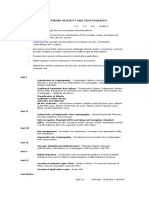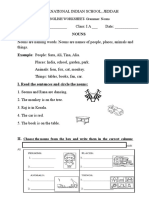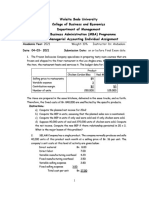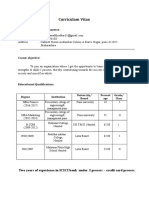0% found this document useful (0 votes)
42 views3 pagesCryptography and Network Security Notes
The document outlines key concepts in cryptography and network security, covering security principles, types of attacks, and various cryptographic techniques including symmetric and asymmetric key ciphers. It discusses hash functions, authentication codes, key management, and transport-level security protocols like SSL/TLS and HTTPS. Additionally, it addresses email security methods and presents case studies on secure multiparty computation, virtual elections, and online transaction security.
Uploaded by
naaziatabassum.0401Copyright
© © All Rights Reserved
We take content rights seriously. If you suspect this is your content, claim it here.
Available Formats
Download as PDF, TXT or read online on Scribd
0% found this document useful (0 votes)
42 views3 pagesCryptography and Network Security Notes
The document outlines key concepts in cryptography and network security, covering security principles, types of attacks, and various cryptographic techniques including symmetric and asymmetric key ciphers. It discusses hash functions, authentication codes, key management, and transport-level security protocols like SSL/TLS and HTTPS. Additionally, it addresses email security methods and presents case studies on secure multiparty computation, virtual elections, and online transaction security.
Uploaded by
naaziatabassum.0401Copyright
© © All Rights Reserved
We take content rights seriously. If you suspect this is your content, claim it here.
Available Formats
Download as PDF, TXT or read online on Scribd
/ 3





